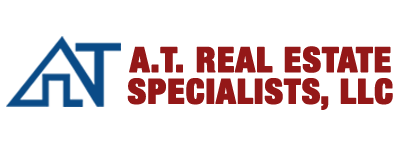Monthly Newsletter – October, 2010 www.seniorsrealestate.com
Attaining the Good Life
By Elyse Umlauf-Garneau
Attaining the Good Life
Philosophers, writers, and musicians all have pondered the meaning of the good life.
Recently, MetLife Mature Market Institute (MMI) did too.
Though the concept of the good life is a bit vague, the company’s study, “Meaning Really Matters: The MetLife Study on How Purpose is Recession‐Proof and Age‐Proof,” tries to nail down those things that contribute to satisfaction with life. MMI did so by studying the concept and surveying people ranging in age from 25 to 74.
Having enough money, living a life with meaning (that is, time for friends and family) and possessing good physical and mental health were among the things respondents identified as contributors to a good life. And also highly important was the notion of having a sense of purpose.
The study, based on author and life coach Richard Leider’s work and book The Power of Purpose, Repacking Your Bags, is a follow-up to research MMI did in 2009 called “Discovering What Matters.”
“Meaning Really Matters: The MetLife Study on How Purpose is Recession‐Proof and Age‐Proof,” found that the older cohort, those aged 45 to 74, were more likely to report having focus, vision, and purpose, compared to those aged 25 to 44.
Members of that older group tend concentrate more on meaning-laden activities–spending time helping others and community activities, for example–than their younger counterparts, who were more focused on money issues.
An ability to rebound after crisis also seems to play a role in satisfaction, and as people age, meaning-laden activities become important. In the 2009 study, for example, Leider addressed the idea that people’s ability to connect with something bigger than themselves boosts their ability to deal with difficulties, such as job losses, health problems, and deaths of loved ones.
People can’t control those external events. Yet, the study says, “… how they choose to live and react, the professionals they consult, and the kinds of relationships they develop with spouses and partners, siblings, children, grandchildren, friends, and co-workers are of their making. If people are dissatisfied with their lives — if they feel it lacks meaning — they can do something about it. Hence discovering purpose is an ongoing quest rather than a one-time trip to an exotic land.”
In an effort to help individuals ponder their version of the good life, MMI offers a planning tips, “Meaning Really Matters: Your Keys to the Good Life.” It features a series of questions that invite introspection.
Those include picturing yourself three years from now and 20 years from now and considering work, how you’re spending time, and the strength of your connections with family and friends. It also addresses goals and what you need to do to do to ensure that you meet those near and long-term goals.
The complete study is available at http://www.metlife.com/assets/cao/mmi/publications/studies/2010/mmi-meaning-really-matters.pdf .
Planning tips are available at http://www.metlife.com/assets/cao/mmi/publications/studies/2010/mmi-meaning-really-matters-tips.pdf .
Blueprint for aging in place
In another September 2010 study, “The MetLife Report on Aging in Place 2.0: Rethinking Solutions to the Home Care Challenge,” MMI takes a glimpse into the future and envisions a better way for Americans to age.
Its blueprint, called AiP2.0, looks at a broad swath of aging concerns and sets forth new ideas for modifying homes, communities and care management and incorporating technology so that they all work in concert to support aging in place.
It seems an important mission, especially in light of its estimate that the population of people aged 85 and over is ever-expanding is expected to reach 8.7 million by 2030.
It envisions a way for systems and designs to allow people to truly age in place where they wish. “If individuals are forced to move due to a health crisis, it is not aging in place,” says the report.
To attain such lofty goals, the study suggests a series of radical changes that need to be made in communities and in the public and private sectors.
The plan outlines an array of significant steps required, and they include everything from developing care management, social interaction, wellness and transportation systems and better coordinating the delivery of care to integrating monitoring technologies into daily life to make home care safer and more efficient.
Many of the above are big ideas that likely will take time, along with the collective efforts of businesses, researchers, activists, and the public and private sectors.
But the study also points to things homeowners can do to help themselves right now.
And that entails incorporating universal design in their homes. It’s something everyone can do when contemplating renovations and upgrades. “One problem is that most home were not designed and built for the needs of aging residents or caregiving,” says the report.
Moreover, most families don’t consider upgrades for aging in place until a crisis hits. Then they’re planning and building in a panic, which doesn’t always yield the best, most efficient results.
It suggests advance planning and illustrates ways to prioritize projects. It also offers price ranges of the projects that are associated with each priority.
Costs can range from under $1,000 up to $75,000, and the study notes that low-cost interventions have clear payback in terms of fewer hospitalizations and medical costs in a very short timeframe.
Here’s one way to prioritize projects.
First Priority:
Falls prevention. Cost: $1,000 or less
Steps include:
• Removing throw rugs, especially in bathrooms
• Installing grab bars and grips in the bathroom
• Assuring sturdy handrails on both sides at steps
• Providing good lighting and switching, especially at stairs, halls, and entries
• Securing or removing carpets at stairs
• Installing soft path lighting for nighttime mobility
Second Priority:
Entryway, easy movement, and use of home features. Cost: $4,500–$30,000
• Removing or reducing the number and/or height of steps and increasing the horizontal depth of steps for easy side stepping and that allow the use of both hands on one rail
• Creating a clear, no-step path to the bedroom and bathroom
• Rearranging or repositioning of furniture, entertainment systems, and spaces
Third Priority:
Substantial remodeling and equipment. Cost: $8,000–$75,000
• Installing no-step shower or bath lift mechanism, a seated sink, and assistance space at the toilet
• Providing seated/multi-level food preparation areas
• Creating sun- and rain-protected outdoor areas
• Putting in backup power sources for power outages
Beyond just making homes suitable for aging in place, AiP2.0 has larger societal benefits, according to the report. They include:
• Support and stress reduction for family caregivers
• Employment opportunities in the caregiving arena
• Fewer illnesses and injuries
• Acute-care cost reduction
• More efficient use of resources and the reduction of redundant services
Read the entire report at http://www.metlife.com/assets/cao/mmi/publications/studies/2010/mmi-aging-place.pdf .
Coming up next
In the coming months, we’ll be addressing some of the emotional and logistical challenges associated with planning for retirement. Look for stories about retirement coaching, potential post-retirement career options, and strategies for facing the angst and emotional issues that emerge prior to retirement.
Real Estate Matters: News & Issues for the Mature Market
A.T. Real Estate Specialists LLC
Arlene Trunzo, CRS,e-Pro,GRI,SRES
Board Certified. 718-317-0949





